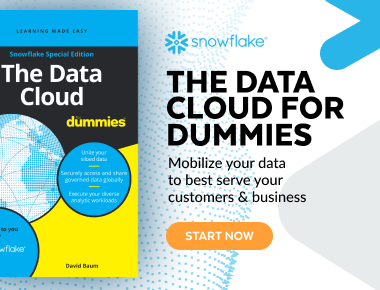Predictive analytics, AKA prediction analytics, leverages data from both diagnostic and descriptive analytics to detect exceptions and patterns that can, with predictive data modeling, help predict future trends. Predictive analytics explains what will happen in the future based on historical data and trends discovered by machine learning and artificial intelligence (AI).
Many businesses employ predictive analytics to optimize operations, improve marketing campaigns, and increase revenue. Predictive models help companies attract, retain and nurture customers.
Benefits of Predictive Analytics for Business
Predictive analytics makes forecasting more accurate and reliable, enabling improved decision-making and planning. Depending on your business, predictive analytics can help you forecast inventory needs, avoid shortages or waste, manage schedules and resourcing for goods and services, set prices based on trends, and optimize revenue.
Predictive analytics can also help improve your marketing campaigns, improving targeting and promotions to generate a greater number of lucrative customer responses and improving cross-selling opportunities.
Types of Predictive Analytics Models
Predictive analytics is type of data analytics. It involves leveraging big data sets and analytical data models to predict future behaviors and performance. Within predictive analytics, there are several types of models. The most common are:
Classification models, AKA descriptive models, which predict whether a target (or customer) is likely to perform a particular action (such as respond favorably to an offer) or not.
Decision trees, AKA decision-making models, are classification models that partition data into subsets based on categories of input variables to provide an understanding of someone’s path of decisions.
Regression models, which predict numbers — e.g., the amount of revenue a customer will generate over a year. Regression analysis estimates relationships among variables, finding patterns in data sets to determine which factors influence outcomes.
Neural networks, which use pattern recognition and AI to model complex relationships between data.
Prediction Analytics FAQ
What is meant by predictive analytics?
Predictive analytics is a type of data analysis that leverages data and analytical data models to predict future behaviors and performance.
How do predictive analytics work?
Predictive analytics uses data and modeling — as well as a set of assumptions about how future behavior mimics historical and current behavior — to find patterns and trends, which are applied to new or different data to predict values.
What is predictive and prescriptive analytics?
While predictive analytics helps businesses understand future outcomes (what may happen), prescriptive analytics provides specific guidance for companies to make the desired outcome occur. Predictive analytics, then, is a component of prescriptive analytics in that it identifies what’s likely to happen.
What is the best algorithm for prediction?
The best predictive analytics algorithm, or model, depends on the context and type of business problem needing to be solved. Classification models are useful for answering yes or no questions and provide genera analysis helpful for decision-making. Regression models provide numeric estimates of future outcomes. And neural networks can make sense of complex data sets and provide actionable insights.
Snowflake for Predictive Analytics
Predictive analytics leverages Big Data sets to help organizations receive insights around crucial business metrics and behaviors. Many business analysts use predictive analytics to build the statistical models necessary to make proactive business decisions or changes.
Snowflake's Data Cloud enables companies to process semi-structured data and build predictive modeling to experience faster speed and more functionality without copying the data. In addition, Snowflake's partner ecosystem provides a wide range of tools and platforms to expand data analytics capabilities in the cloud.


